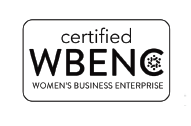3 mandatory elements of truly motivational speeches
 Speakers deliver motivational speeches for one reason: to provide the insight, guidance and encouragement people need to achieve a defined goal.
Speakers deliver motivational speeches for one reason: to provide the insight, guidance and encouragement people need to achieve a defined goal.
For a B2B company, that goal might be taking risks to innovate and then launch an exciting new product – or responding fast to build on momentum gained in a niche market.
But unless motivational speeches are constructed with intention, the audience will not feel equipped or empowered to do what’s necessary to achieve the defined goal.
- So how do you make an audience feel motivated?
- How do you move people so they are likely to do what you want them to do?
Motivational speeches have three mandatory elements that you, as the speaker, must weave into every motivational speech you deliver.
Let’s look at each one.
1. Trust: “The speaker is believable”
First, your audience must feel like they can trust you. They must feel that you, as the speaker, are believable.
When delivering motivational speeches, you can build trust in three ways: by being knowledgeable, sharing similarities and showing empathy.
- Be knowledgeable. The audience must believe you are an expert by what you say – your obvious command of the topic at hand – and how you say it, which you convey through your body language. The right body language – like smiling, opening your arms and hands, making deliberate eye contact, using the right tone, projecting your voice with confidence and using gestures that match your message – will give you points for trust and credibility. (Important: For the audience to feel like they can trust you, your content and your body language need to match.)
 Share similarities. People tend to trust people who are similar in some way or have some shared connections or experiences. (Think how you feel at a cocktail party the moment you discover that a guest you just met attended your alma mater; immediately you have something in common: a shared experience that’s interesting and comfortable to talk about.) So take the time to figure out how you, as the speaker, and your audience are similar, and include these details in your speech.
Share similarities. People tend to trust people who are similar in some way or have some shared connections or experiences. (Think how you feel at a cocktail party the moment you discover that a guest you just met attended your alma mater; immediately you have something in common: a shared experience that’s interesting and comfortable to talk about.) So take the time to figure out how you, as the speaker, and your audience are similar, and include these details in your speech.- Show empathy. The audience must believe that you care about them – that you truly understand their likes and dislikes and know what they need. You can demonstrate empathy by saying something that shows you know where they stand on the topic or what they are experiencing – whether that’s anticipation, fear, concern or something else.
If you are knowledgeable, share similarities and show empathy (using personal stories and maybe even humor as appropriate), your audience will likely feel an affinity toward you. And that feeling will go a long way toward getting the audience to trust you every time you deliver motivational speeches.
Here’s an example of how one speaker built trust when speaking to a diverse audience of both new and longtime employees:
I remember my own experience trying to understand what our organization was all about. I was just 23 years old – younger than most of you! – when I was hired here in 1972.
Yes, I had rules to follow. But the reasons for those rules were neither clear nor explained to me. Often, they were downright confusing!
I made plenty of mistakes. I tried to do things that I was told later on wouldn’t work – or that I couldn’t do. Over time, I began to appreciate WHY our fundamentals are so important. And exactly HOW they lead to innovation and collective success – the chance for all of us to pursue the Spirit of Opportunity and claim the American Dream.
2. Desire: “The future will be better than the past”
Second, your audience must feel an intense desire to achieve the goal that you define. They must feel that based on everything you’ve told them, there is a solution, and the future you’ve helped them imagine will be better than anything they’ve experienced in the past.
 When delivering motivational speeches, you can create this desire for a better future in three ways: by meeting a need the audience has, using both logic and emotion to make your case, and pledging to provide plenty of help along the way.
When delivering motivational speeches, you can create this desire for a better future in three ways: by meeting a need the audience has, using both logic and emotion to make your case, and pledging to provide plenty of help along the way.
- Meet a need: The audience must believe that the solution you propose actually matters to them (and not only to you). It must meet a need they have and make a difference to them. They need to believe that their lives will be better if they decide to come along on the journey to build this better future (i.e., they will either avoid pain or gain some sort of reward for their efforts).
- Use both logic and emotion: The audience must hear you make a case that artfully combines both a logical argument with an emotional appeal. (Again, you need both – not just one or the other.)
- Pledge help along the way: The audience must feel that you’ve got their back – that you already know what could be challenging for them and have done something to address those challenges to make the journey easier for them.
Here’s an example:
So over the next five months and beyond, as we continue our digital transformation and roll out digital commerce so you can serve customers anytime, anywhere – know that you are not in this alone. We will be there with you … shoulder to shoulder, to guide you, train you and support you … so you will continue to have the freedom to serve your customers – and the freedom to achieve results! – without limits.
3. Clarity: “I know what to do next”
 Third, your audience must feel absolute clarity about their role in getting to the defined goal. They must know and be able to articulate what they need to do next to meet that goal – whether that’s developing deeper relationships with customers or choosing to adopt and learn a new technology.
Third, your audience must feel absolute clarity about their role in getting to the defined goal. They must know and be able to articulate what they need to do next to meet that goal – whether that’s developing deeper relationships with customers or choosing to adopt and learn a new technology.
In addition, the audience must believe that their role is crucial to achieving the goal, and that they have something special – an ability or a power of some sort, like resilience, experience or an entrepreneurial mindset – to get them there.
When delivering motivational speeches, you can make the audience’s role and next step absolutely clear by avoiding abstract ideas and instead being concrete in every way.
Here’s an example:
To change means making decisions with each other – not for each other. Reviving the art of the debate. And asking “fair and balanced” questions every time we face a decision as equity partners.
Remember these three mandatory elements of truly motivational speeches
Trust.
Desire.
Clarity.
If you can get your audience to trust you, to desire a future you’ve helped them envision and to have absolute clarity about their next step forward, you will be well on your way to constructing motivational speeches that influence others to help you achieve your defined and important goals.
“The influence of a fountain makes the brook flow.”
~African (Yoruba)

















